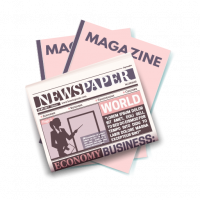Digital Smart City Advertising | Innovation Meets Infrastructure

As urban landscapes continue to evolve, the concept of smart cities has emerged as a beacon of futuristic innovation. These cities leverage technology and data to improve the quality of life for residents, streamline urban management, and promote sustainable development. At the heart of this evolution lies an often-overlooked yet powerful force — smart city advertising. This new frontier blends digital transformation with physical infrastructure, creating a seamless and intelligent marketing ecosystem.
What Is Smart City Advertising?
Smart city advertising refers to the integration of digital
advertising platforms with smart city technologies and infrastructure. From
interactive digital billboards to location-based mobile ads and AI-powered
kiosks, this form of advertising capitalizes on the city's connected ecosystem.
It's not just about placing ads in urban areas — it's about delivering
targeted, real-time content through smart mediums embedded in the city’s very
foundation.
The Backbone: IoT and Data-Driven Insights
Smart city advertising thrives on the Internet of Things
(IoT). Sensors, cameras, and connected devices collect valuable data such as
foot traffic, demographic information, weather conditions, and real-time user
behavior. This data is then used to deliver personalized, contextually relevant
ads.
For example, a digital screen at a bus stop might show
different ads depending on the time of day, temperature, or even the
demographics of the people nearby. Advertisers can track performance metrics in
real-time, optimizing campaigns with precision previously unimaginable in
traditional outdoor advertising.
Key Features of Smart City Advertising
1. Hyper-Localization
Smart city advertising enables marketers to reach audiences
at the right time and place. Ads can be customized based on GPS data, traffic
flow, and local events, making them far more engaging and relevant.
2. Sustainability and Energy Efficiency
Many smart ad platforms are built into infrastructure that
uses renewable energy sources, such as solar-powered bus shelters or kinetic
energy sidewalks. These sustainable solutions align with the eco-friendly
objectives of modern smart cities.
3. Interactive and Immersive Experiences
With the integration of AR (Augmented Reality) and AI, smart
city ads can be interactive. Passersby can engage with digital screens using
voice commands, touchscreens, or smartphones, turning passive viewers into
active participants.
4. Programmatic DOOH (Digital Out-Of-Home) Advertising
Programmatic DOOH automates ad buying based on real-time
data. This ensures that ads are served to the right people, at the right time,
and in the right context — all without manual intervention.
Benefits for Cities and Advertisers
For Cities:
- Revenue
Generation: Leasing digital ad space provides a steady income stream
for municipalities.
- Public
Information: Ad infrastructure can double as information centers,
displaying emergency alerts, transit updates, and community announcements.
- Urban
Aesthetics: Digital screens can enhance the visual appeal of the
cityscape with dynamic content and creative design.
For Advertisers:
- Enhanced
Targeting: Data-driven insights improve campaign effectiveness.
- Real-Time
Analytics: Instant performance tracking allows for agile marketing
strategies.
- Brand
Innovation: Cutting-edge technology helps brands stand out and create
memorable impressions.
Real-World Examples
- London:
The city’s LinkUK initiative offers free Wi-Fi, phone charging, and local
information through street kiosks, all while displaying digital ads.
- New
York City: LinkNYC screens deliver dynamic advertisements while
providing public services and collecting real-time environmental data.
- Barcelona:
Smart benches and bus stops equipped with solar panels and Wi-Fi serve as
advertising platforms and public utilities.
The Road Ahead
The future of smart city advertising lies in deeper
integration with AI, 5G networks, and even blockchain for secure data
management. As urban centers become more intelligent and connected, advertising
will evolve from a one-way message to a two-way conversation — contextual,
immersive, and responsive.
Final Thoughts
Smart city advertising is more than just a trend — it’s a
transformative shift that fuses innovation with infrastructure. It redefines
how brands communicate with consumers while supporting cities in their mission
to become more efficient, sustainable, and citizen-centric. As cities grow
smarter, so too must our approach to advertising — and the opportunities are
just beginning to unfold.
Elyts Advertising and Branding Solutions | www.elyts.in (India) | www.elyts.agency (UAE)






















Leave a Comment